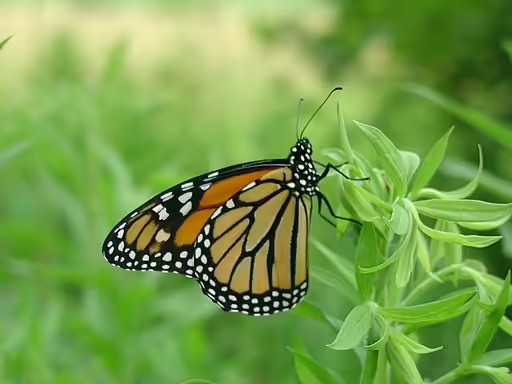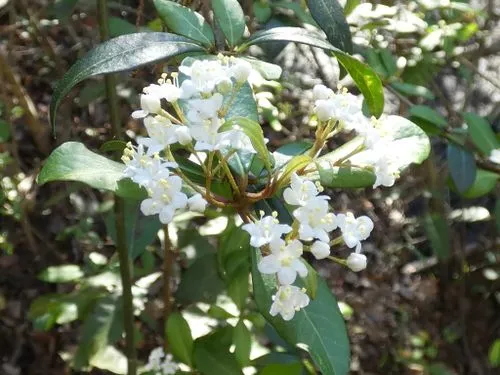Table of Contents for Rush Milkweed (Asclepias subulata)
Rush Milkweed (Asclepias subulata) is a subshrub that is native to the southwestern United States. This plant is a host to the Queen (Danaus gilippus) and Monarch (Danaus plexippus) butterflies. Growing from 3 to 6 feet tall, this species has yellowish-white to cream flowers that bloom throughout the year. It is hardy in zones 9-11.
Taxonomy and Naming of Rush Milkweed (Asclepias subulata)

Taxonomy
Rush Milkweed (Asclepias subulata) was originally named and described by Joseph Decaisne, a French botanist, in 1844. The species has kept this name since and is a member of the Dogbane Family (Apocynaceae).
Meaning of the Scientific and Common Names
Scientific Name
The genus name, Asclepias, is named for the Greek god of healing, Asklepios (Flora of Wisconsin). The species name, subulata, is from the Latin for awl-shaped, referring to the leaves (Missouri Botanical Garden).
Common Name and Alternative Names
The common name comes from the resemblance of the plant to a rush. Other common names include skeleton milkweed, desert milkweed, and desert reed-stem milkweed.
Physical Description

- Plant Type: This plant is a subshrub with semi-succulent whitish stems that are reed like
- Height: 3 to 6 feet
- Stem: The stem is pubescent and decumbent to ascending
- Leaves: The leaves are opposite, simple, entire, and linear or filiform in shape. The leaves are 0.4 to 2 inches long and about 0.25 inches wide. The leaves are very short-lived (Felger 2014) and thread-like (Felger 2012).
- Flower color: yellowish-white to cream and have a waxy appearance
- Blooming period: This plant can bloom year-round.
- Fruiting type and period: This plant has follicles that mature in the late summer and fall.
Range of Rush Milkweed (Asclepias subulata) in the United States and Canada

This milkweed species is native to the southwestern United States. It is also native to northern Mexico around the Baja Peninsula.
Habitat

This species grows in washes and arroyos (Jepson eflora), the benches of slopes (Roberts, et al. 1998), desert areas in Baja California (Shreve 1936), sandy flats (McLaughlin 1987), and roadsides (Felger 2014). In Mexico it has been described as growing in sandy and gravelly soil (Johnston 1921).
Hosted Insects

This species is a host for the Monarch Butterfly (Danaus plexippus), the Queen Butterfly (Danaus gilippus).
Other Supported Wildlife

This species is a nectar source to other butterflies, skippers, bees, and wasps during the growing season. This plant is visited by wasps such as the orange-winged tarantula hawk wasp (Hemipepsis sp.) and the spider wasp (Pepsis thisbe) (Felger 2014).
Frequently Asked Questions
Is this plant poisonous?
Like other milkweeds, it has cardiac glycosides (cardenolides) and is considered to be poisonous with ingestion.
Does this plant have any ethnobotanical uses?
The Native American Ethobotanical Database shows that this plant has been used for eye diseases, and gastrointestinal disorders.
How is this plant distinguished from other milkweeds?
This plant is closest to the white-stem milkweed (Asclepias albicans). They are separated in that the hood exceeds the anther head in rush milkweed, whereas the other does not (Jepson eflora). White-stem milkweed also has fewer stems that are taller (Felger 2014).
Is this plant invasive?
This plant has not been shown to be invasive in the literature. It also has a fairly restrictive habitat and is uncommon in most of its range.
What else is interesting about this plant?
This plant has chemicals in it that may have an adverse effect on cancer cells and could be a treatment for it (Rascon 2015).
Gardening with Rush Milkweed (Asclepias subulata)

Hardiness
This species is hardy in zones 9-11. If your garden is within these zones and you have the right growing conditions (soil, moisture and exposure), you may well be able to grow this plant. However, if planted outside of its range, the hosted species may not recognize the plant or be harmed by ingesting a different species with an unfamiliar chemical composition.
Optimal Conditions
This species grows best in places it can receive full sun and has dry sandy and gravelly soils.
References
- Felger, Richard Stephen and S. Rutman and Jim Malusa. 2014. Ajo Peak to Tinajas Altas: Flora of southwestern Arizona: Part 8, Eudicots: Acanthaceae – Apocynaceae. Phytoneuron 2014-85: 1-74.
- Felger, Richard Stephen, Thomas R. Van Devender, Bill Broyles, and Jim Malusa. 2012. Flora of Tinajas Altas, Arizona – A Century of Botanical Forays and Forty Thousand Years of Neotoma Chronicles. Journal of the Botanical Research Institute of Texas 6 (1): 157-257.
- Johnston, Ivan. 1924. Expeditions of the California Academy of Sciences to the Gulf of California in 1921. The botany (the vascular plants). Proceedings of the California Academy of Sciences 12 (4): 951-1218.
- McLaughlin, Steven P., Janice E. Bowers, and Kenneth R.F. Hall. 1987. Vascular Flora of Eastern Imperial County, California. Madrono 34: 359-378.
- Rascon, Valenzuela, C. Velazquez, A Garibay-Escobar, LA Medina-Juarez, W Vilegas, and R.E. Robles-Zepeda. 2015. Antiproliferative activity of cardenolide glycosides from Asclepias subulata. Journal of Ethnopharmacology 171: 280-286.
- Roberts, Fred M., Grant Fletcher, Steve Boyd, Andrew C. Sanders, Peter Lesica, Peter Husby, Stephen V. Cooper, and Job Kuijt. 1998. Noteworthy Collections. Madrono 45: 326-330.
- Shreve, Forrest. 1936. The Transition from Desert to Chaparral in Baja California. Madrono 3: 257-264.
- Woodson, Robert E. 1954. The North American Species of Asclepias L. Annals of the Missouri Botanical Garden 41: 1-211.
